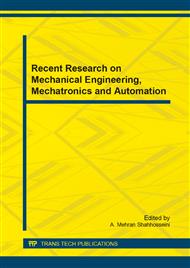p.684
p.690
p.696
p.702
p.708
p.712
p.718
p.723
p.728
Continue Wavelet Transform's Analysis in Zhuji Station's Rainfall Sequence Transformation
Abstract:
In this paper, it uses continuous wavelet transform in analysing zhuji station monthly rainfall. from the transformed wavelet coefficients’ real component, variance and modulus square, we can get the main measure contained in zhuji’s monthly rainfall sequence. By anlysing the transformation process of continuous wavelet transform coefficien’s real part of various scales, we can get zhuji station’s monthly rainfall sequence wet-dry transformation process of various scales. By caculated , we found zhuji station’s monthly rainfall sequence contains 10 month , 171 month and 393 month scale. In large scales, zhuji station’s rainfall is in hemiplegia period from 2013 to 2021. in small scale, zhuji station’s rainfall shifts strongly.
Info:
Periodical:
Pages:
708-711
Citation:
Online since:
July 2014
Authors:
Price:
Сopyright:
© 2014 Trans Tech Publications Ltd. All Rights Reserved
Share:
Citation:


